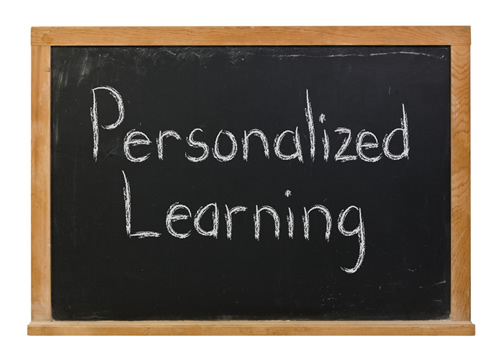Any teacher who has spent more than a few years in the profession will be exposed to a variety of educational trends. Innovative interventions, burgeoning buzzwords, and ambiguous acronyms are often touted as the next best thing, only to be replaced a short time later with a new trend.
For this reason, it’s easy to become disillusioned about implementing a change in pedagogy; why work to make room for something new when it’s likely to disappear in a short time?
Related content: 3 ways to find time for personalized learning
At first glance, personalized learning is one of these trends. It’s become a focus of professional development in districts across the country, and keynote speakers at conferences are touting its worth. But did you know that personalized learning has actually been around since the 1960s, when Fred Keller developed the Personalized System of Instruction?
In his plan, Keller asserted that effective instruction should incorporate five principles. These principles, including self-paced instruction and working toward mastery, have been echoed in the years since by educational literature and foundations, including the Aurora Institute (formerly iNACOL) and ISTE.
Despite being a pedagogical practice for more than 50 years, personalized learning is only now becoming mainstream as teachers work to more carefully meet the needs of individual students rather than attempt one-size-fits-all lesson planning.
Making the shift from more traditional modes of teaching to a system that encourages personalized learning for all students can be daunting, but fear not! Personalizing learning for students does not mean creating 150 different lesson plans for 150 different students. There are some easy ways to personalize learning in ways that can benefit all students while still allowing for streamlined planning and the use of existing materials, and many of them are already at your fingertips.
Consider the ways in which following the Aurora Institute essential components of personalization can be adapted to suit your classroom needs:
• Flexible pacing: In today’s technology-rich world, students have the freedom to work at their own pace both in and out of class. Compile for students your materials, either electronic or otherwise, and set a clear end date. Incorporate checkpoints for understanding on a regular basis (Gimkit and Mentimeter are two favorites), and you’re on your way to helping students work at a pace that best suits them. If you’re lucky, you have a learning management system that allows you to set student completion rules, requiring orderly task completion that can be monitored and allow for teacher intervention as needed.
• Individual learning paths: You may remember the Choose Your Own Adventure book series from childhood. Learning can take on this same form! Create a HyperDoc or a choice board that allows students to plan their own learning path while working toward mastery and meeting learning objectives. With careful planning, a variety of products can meet the same standard, and your students can take control of their own learning and educational choices in the process.
• Frequent feedback from both instructors and peers: Flipgrid, Padlet, and asynchronous discussion boards offer students and instructors the opportunity to learn from and interact with one another. Beyond that, nearly every learning management system allows for rubric-based grading and annotated feedback. Give these a shot as your students work to completion on various tasks – perhaps those that have been individually assigned with completion rules.
• Differentiated instruction: Did you know that many learning management systems allow you to assign specific materials to students or groups of students? Schoology, for instance, features individual assignment of all course materials as well as folders, thereby making it easy to electronically personalize learning for students and/or groups, either by offering remediation or enrichment materials. Imagine how your classroom could transform through the use of a feature like this!
With a few tricks and tools, you can easily modify what you already do to suit the needs of your students through personalized learning. Start small, make a few simple changes, sit back and watch the personalized learning magic happen!
- High school students say AI will change the workforce - April 18, 2024
- Motivating students using the Self-Determination Theory - April 17, 2024
- Michigan Virtual’s statewide workgroup releasing AI guidance for K-12 educators - April 17, 2024


